Indeed. Kagawa Prefecture, known as Nehan, is the last dojo to Okubo-ji. It is the last pilgrimage path nearing nirvana.
Reaching Okubo-ji Temple is a wish come true.
Reaching Temple 88
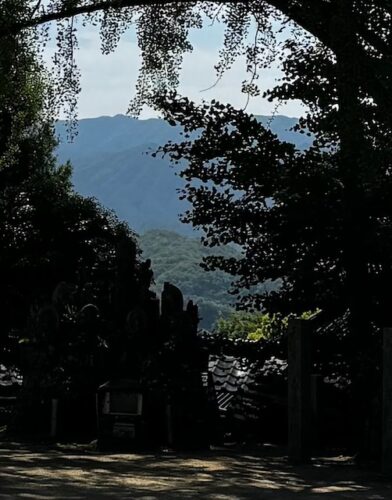
Okubo-ji is the 88th and last temple on the Shikoku Pilgrimage path.
Dedicated to getting rid of bad luck, and to granting wishes, it is called the Temple of Wish Fulfillment.
88 Okubo-ji
The Big Hollow Temple
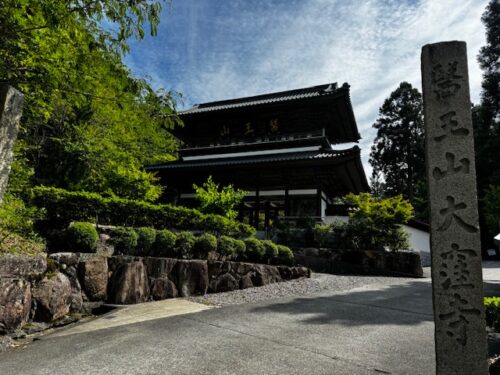
At last, I arrived at this wondrous “place of completion”. As a pilgrim on the path, I tried to imagine how I would feel stepping up to this very last temple gate.
I feel happy and free. I admit that some trepidation and fear set in, too. It is a normal sensation after achieving a long held dream or goal. Every time, I think I can handle it. Let me take that back. I think I won’t even have those feelings. But I always do!
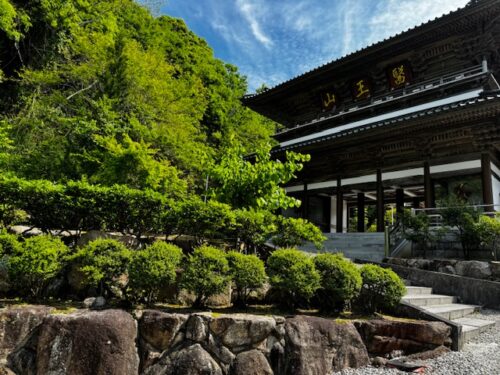
The promenade leads closer to the large north gate.
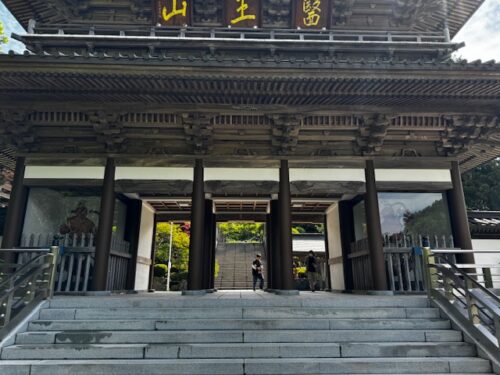
Close up.
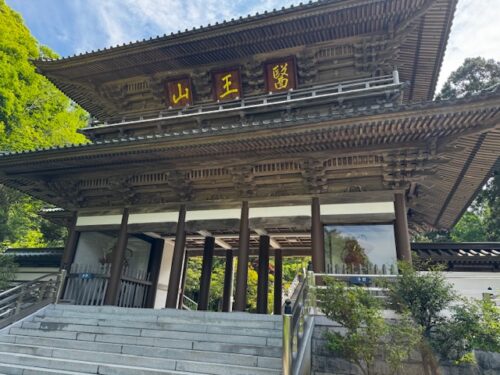
Angled view.
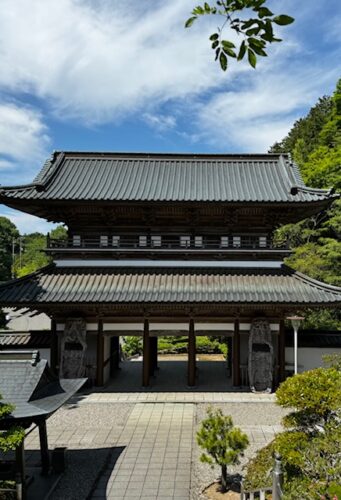
Full view of the other side (inside the precinct) of the main temple gate.
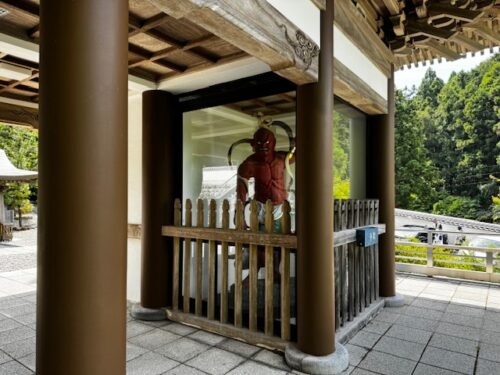
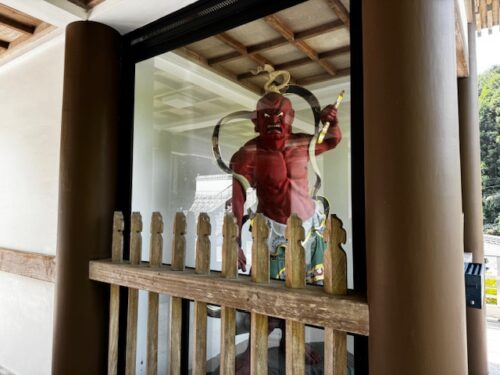
The colorful Nio guardians in the gate! Of all places, the straw sandals should be here…
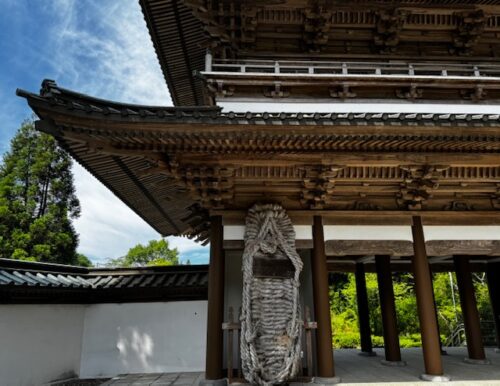
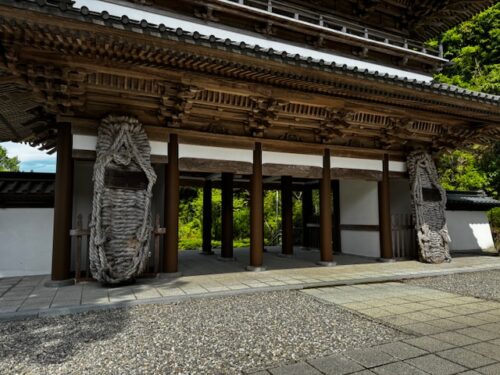
And they are!
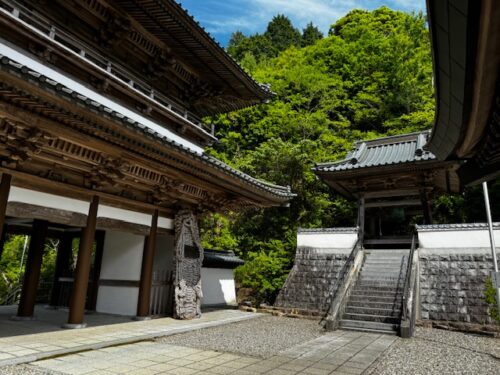
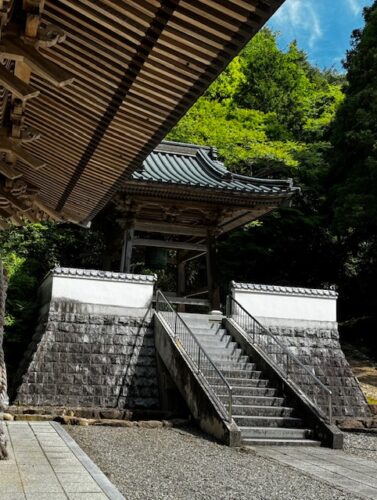
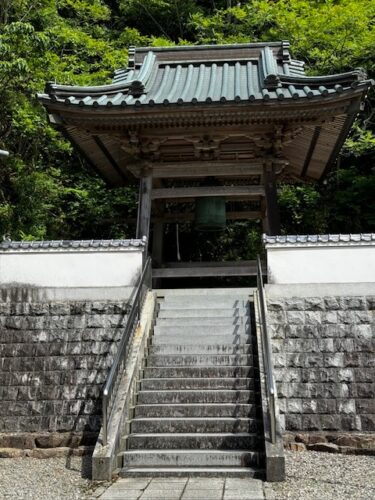
The temple bell is at the top of these steps.
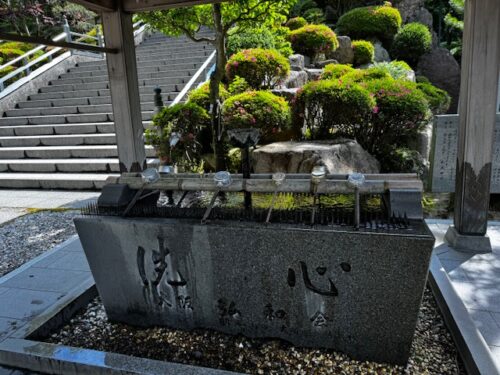
This stone temple fountain near the main gate provides another opportunity to wash before praying at the main temple buildings.
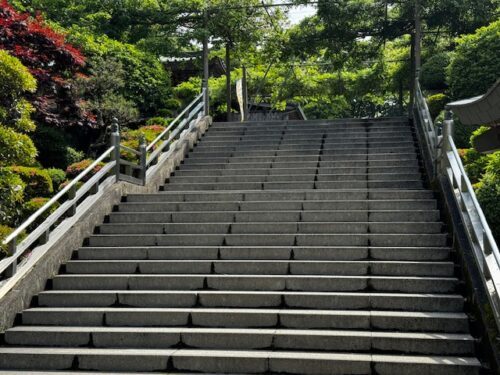
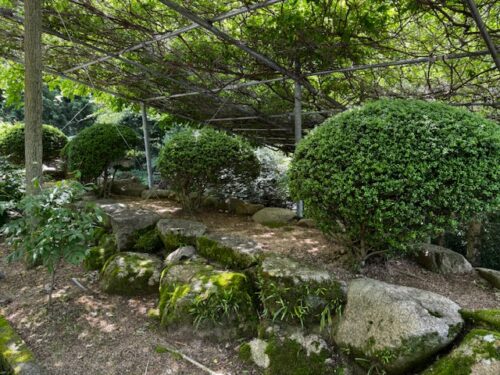
After this journey filled with uncertainties, memories, mishaps, and new friends, I feel emotional. Shouldn’t there be something bigger, something more to make this feel like the end?
Walking staff Repository
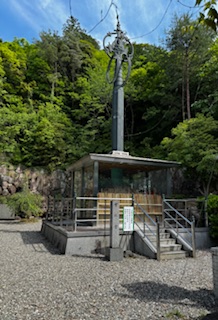
Here are staffs and walking sticks left behind by pilgrims after completing their pilgrimage. It is a dedication to all pilgrims who have made it to this sacred place. Many people find the act of leaving behind the staff a little difficult. I need more time to decide.
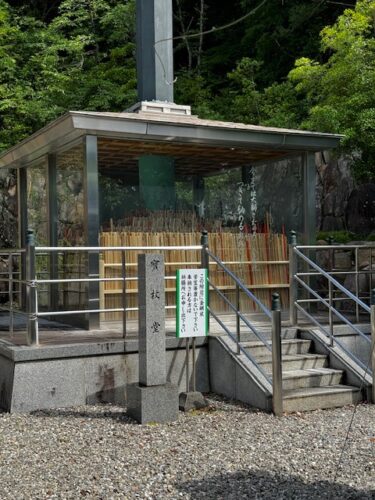
The walking sticks in the repository, Hojyo-do, are disposed of ritually by burning them every spring and summer.
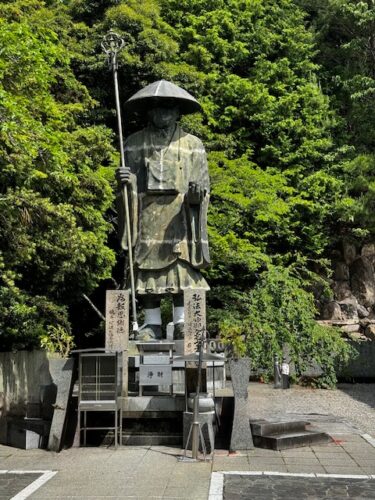
Kukai is said to have conducted ascetic training in a cave behind the Main Hall.
In the cave, Kukai carved a likeness of Yakushi, the Buddha of medicine and healing, offered a staff that had passed through the three great lands of Buddhism—India, China, and Japan—and named the place Okuboji (“Temple of the Great Hollow”).
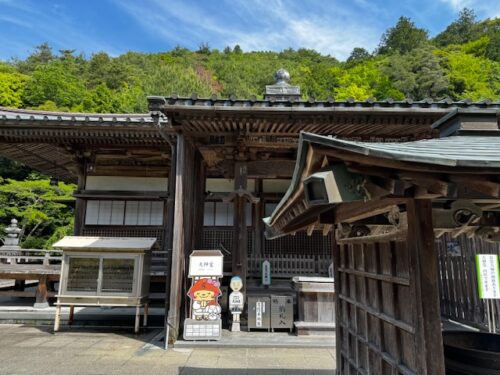
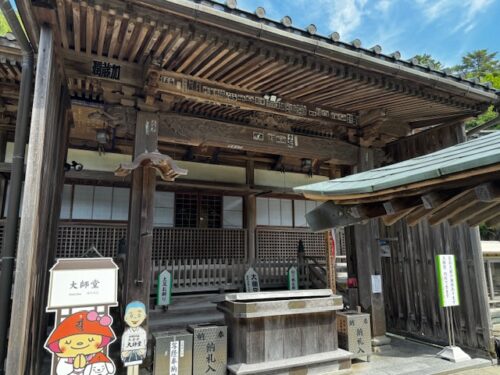
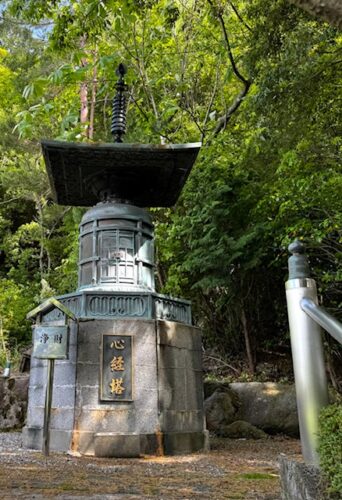
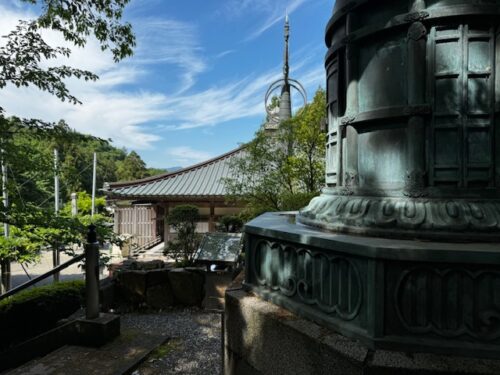
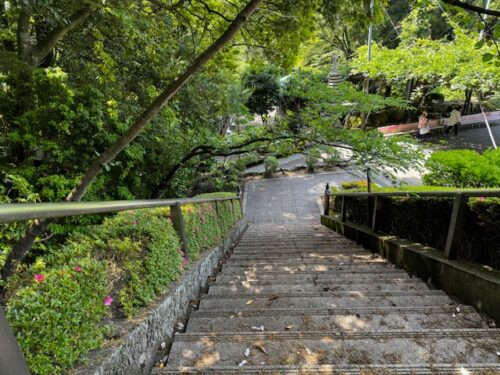
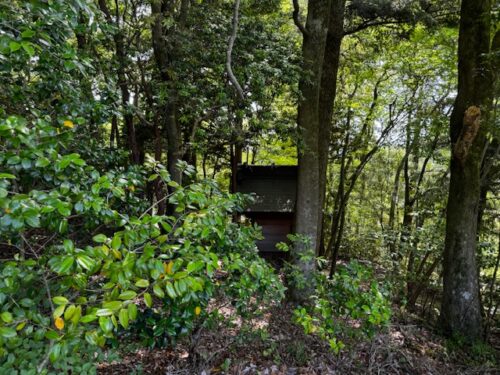
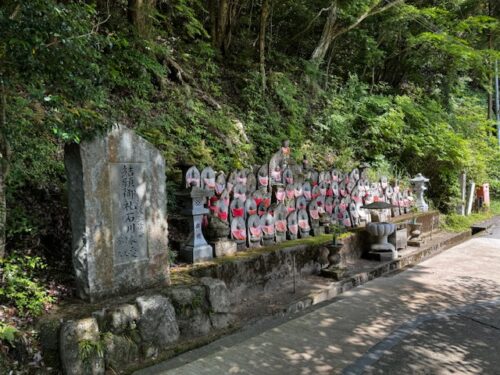
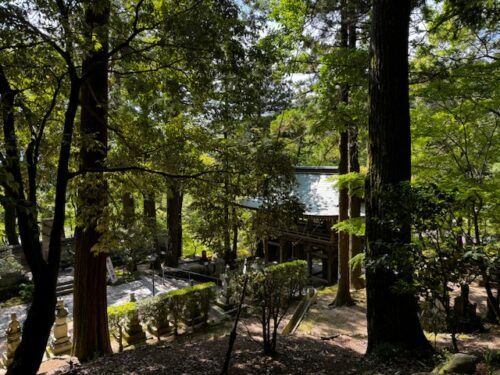
Women allowed
Okubo-ji was the only temple that allowed women to enter the mountain and worship since ancient times. It prospered as the Women’s Koya.
At one time, more than 100 temples stood on the precinct. However, it suffered from disasters including wars and a fire.
The temple overcame its hardships due to the patronage of the Takamatsu feudal lord and work of the chief priests.
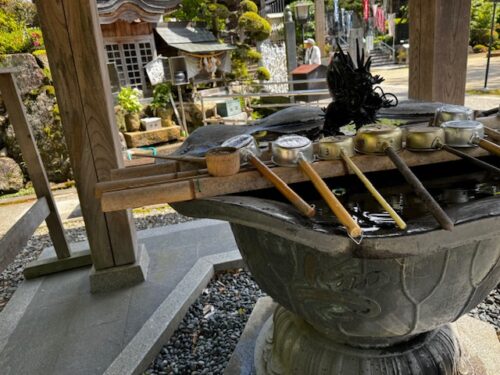
Another temple fountain.
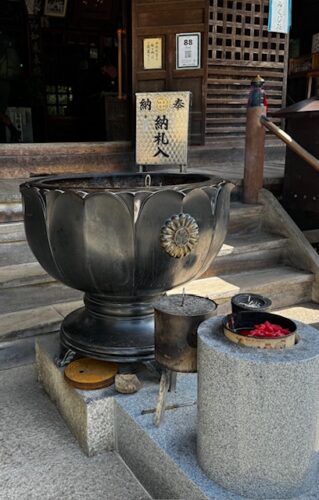
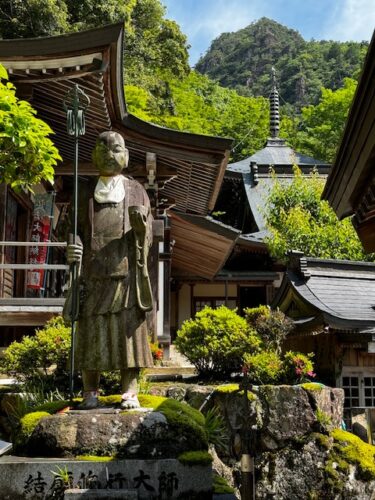
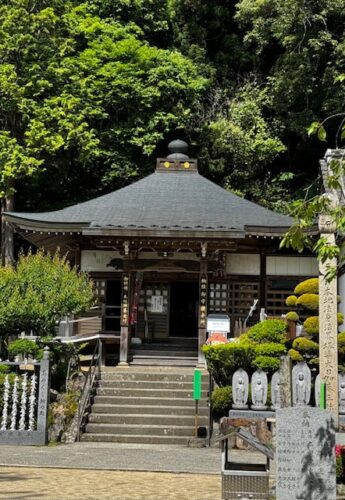
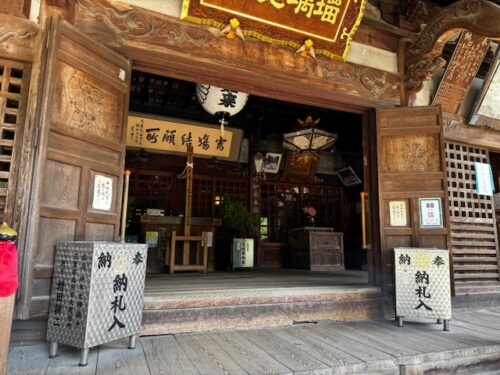
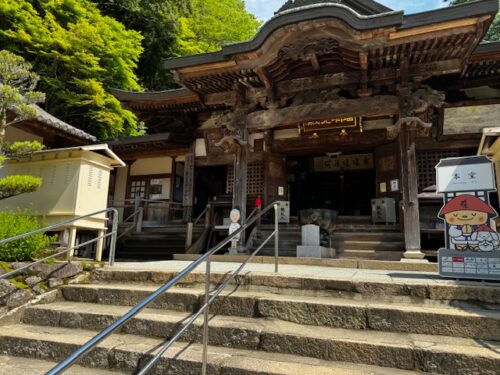
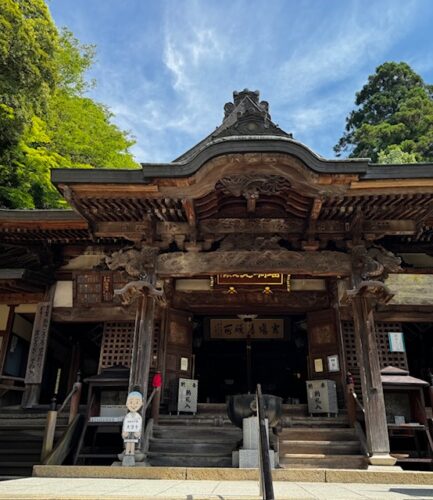
Main hall.
The back hall of the two-storied Tahodo pagoda is accessed from inside the main hall.
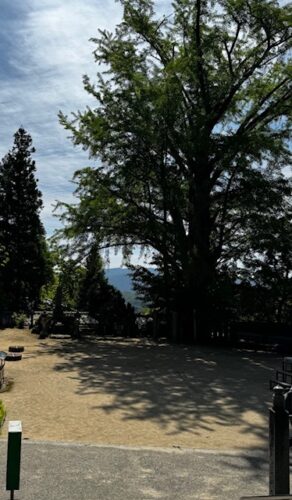
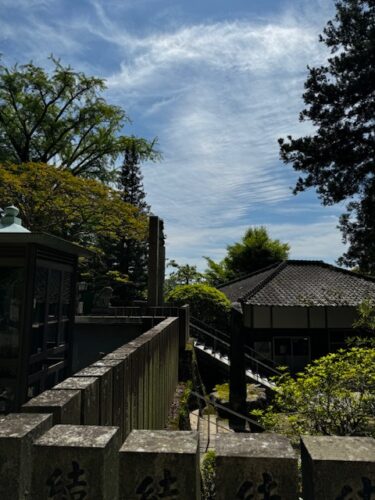
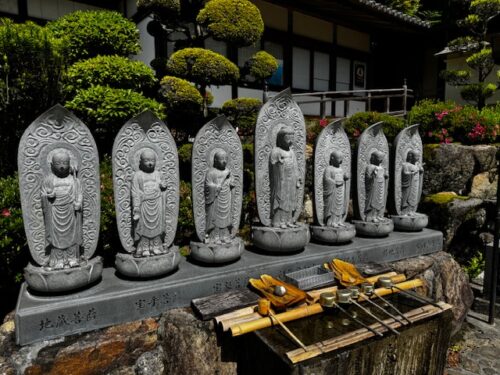
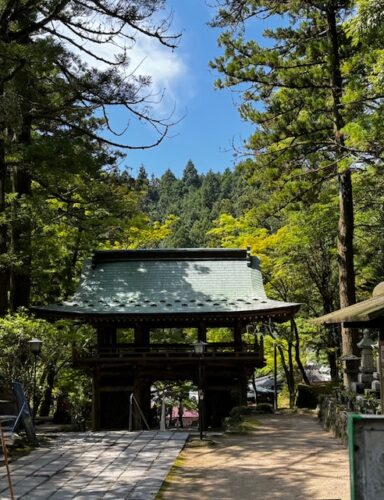
The Nitenmon, located at the south side of Okubo-ji, is a traditional gate made from wood. The large west gate is made from concrete.
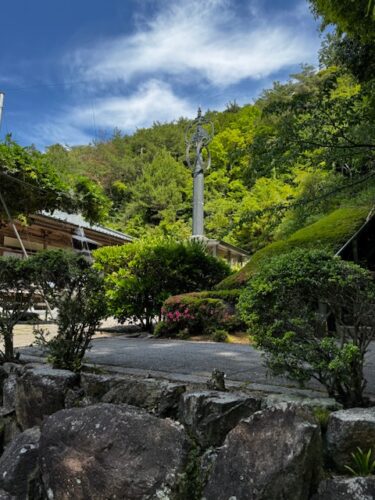
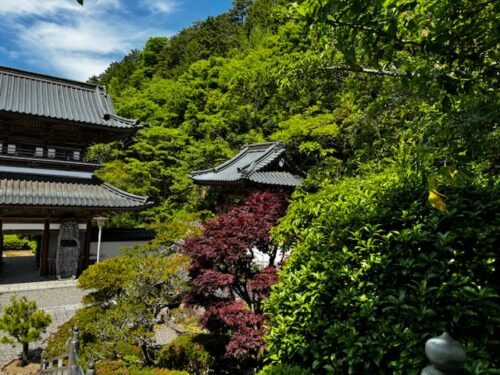
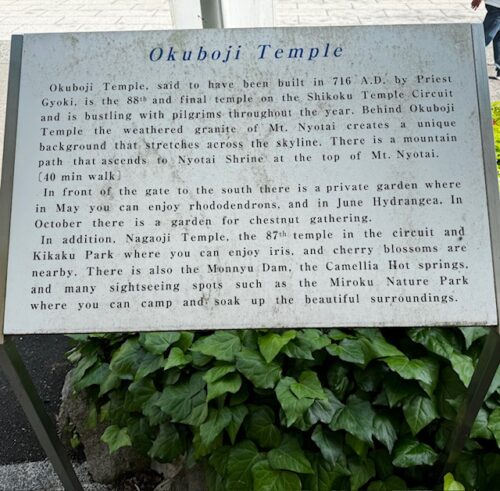
Reverence
Pilgrimage, whether in Spain on the camino or here on the Shikoku in Japan, is a transformative experience. Inevitably, something is going to change – our habits, our desires, or our thinking.
I feel sad for myself that I experienced this so late in my life. A continuous wave of questions come to mind. Things that I thought were important to pursue turned out to be a waste of time. At times, it haunts me. Today, I concluded that nothing is that important. but I am grateful, nonetheless, for the lessons learned.

For me, walking on the pilgrimage path brought happy feelings and warmed my heart. The opportunity to stand and walk in nature and take in the beauty, the silence, and danger as only nature can bring was and, still, is joyful.
It is a tale of beauty, reverence, and friendship that is not easily within reach in my own country. My path is my own. The continuing story is mine to tell.
About Nirvana
Earlier, I wondered if this was all there is? This may be an answer.
Nirvana is this moment seen directly. There is no where else than here. The only gate is now. The only doorway is your own body and mind. Nowhere to go. Nothing else to be. No destination. It’s not something to aim for in the afterlife. It’s simply the quality of this moment.
– Gautama Buddha
This is not the end…
Okubo-ji is the 88th and final stop on Shikoku pilgrimage. Most pilgrims feel that the entire journey has not yet been completed until they return to or visit Ryozen-ji (temple 1), Afterwards, they journey to Mt Koya for a concluding visit to Koyasan, the final resting place of Kukai, posthumously named Kobo Daishi.
That, too, is my intention… with a few stops here and there before I finally leave Japan.
If you will, walk with me.
See you next time.
Baadaye and Mata Ne (またね)
Shirley J 🕉️
This and other posts this summer chronicled my pilgrimage in Japan where I walked the 1200 kilometer-long Shikoku 88 temple pilgrimage. Read my announcement here.

T88
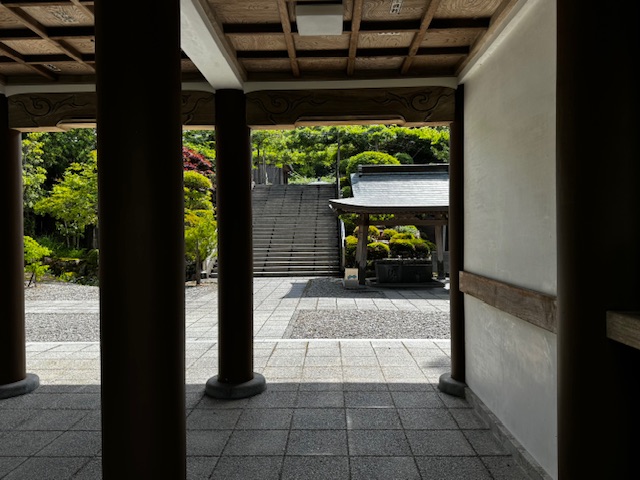
4 thoughts on “🌸 Noire Henro-san: A Wish Fulfilled”
Congratulations, another great achievement behind you, 💯❤️
Thank you so much! I am relieved and happy. 🌸♥️
Congratulations on completing the pilgrimage!
Regarding things that you thought were important to pursue, and later think were a waste, I try to tell myself that even walking on the wrong path teaches me something. It may not be the straightest path to the destination, but it is MY path, and sometimes I get confused. Waking on the wrong path is sometimes the only way to get me unconfused again, so it’s worthwhile for me, even if it was the wrong direction. But it’s also my path, and if someone else were to follow me on it, they would frequently be headed the wrong way for them. If that makes any sense.
Thank you. Often, the wrong path is the right path for a moment or even longer. Wrong is right long enough to teach a lesson… perhaps on a cosmic level. A trail or path may be unmarked but because everybody knows about it, it eventually becomes the “right” way to go. Still, it may not be your choice or your way. You will, however, get there – wherever “there” is – eventually.🌸
Comments are closed.